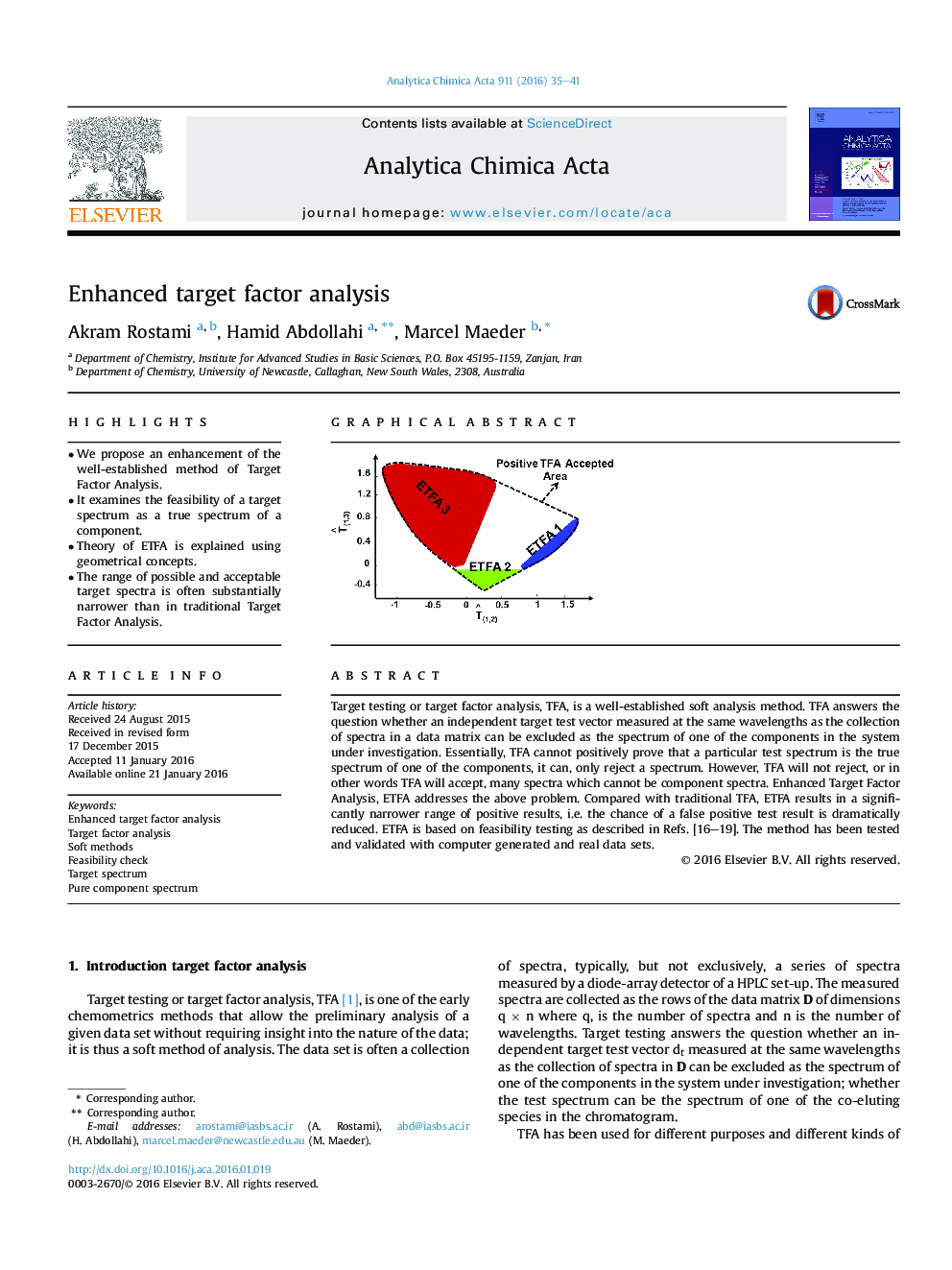| Article ID | Journal | Published Year | Pages | File Type |
|---|---|---|---|---|
| 1162966 | Analytica Chimica Acta | 2016 | 7 Pages |
•We propose an enhancement of the well-established method of Target Factor Analysis.•It examines the feasibility of a target spectrum as a true spectrum of a component.•Theory of ETFA is explained using geometrical concepts.•The range of possible and acceptable target spectra is often substantially narrower than in traditional Target Factor Analysis.
Target testing or target factor analysis, TFA, is a well-established soft analysis method. TFA answers the question whether an independent target test vector measured at the same wavelengths as the collection of spectra in a data matrix can be excluded as the spectrum of one of the components in the system under investigation. Essentially, TFA cannot positively prove that a particular test spectrum is the true spectrum of one of the components, it can, only reject a spectrum. However, TFA will not reject, or in other words TFA will accept, many spectra which cannot be component spectra. Enhanced Target Factor Analysis, ETFA addresses the above problem. Compared with traditional TFA, ETFA results in a significantly narrower range of positive results, i.e. the chance of a false positive test result is dramatically reduced. ETFA is based on feasibility testing as described in Refs. [16–19]. The method has been tested and validated with computer generated and real data sets.
Graphical abstractFigure optionsDownload full-size imageDownload as PowerPoint slide
